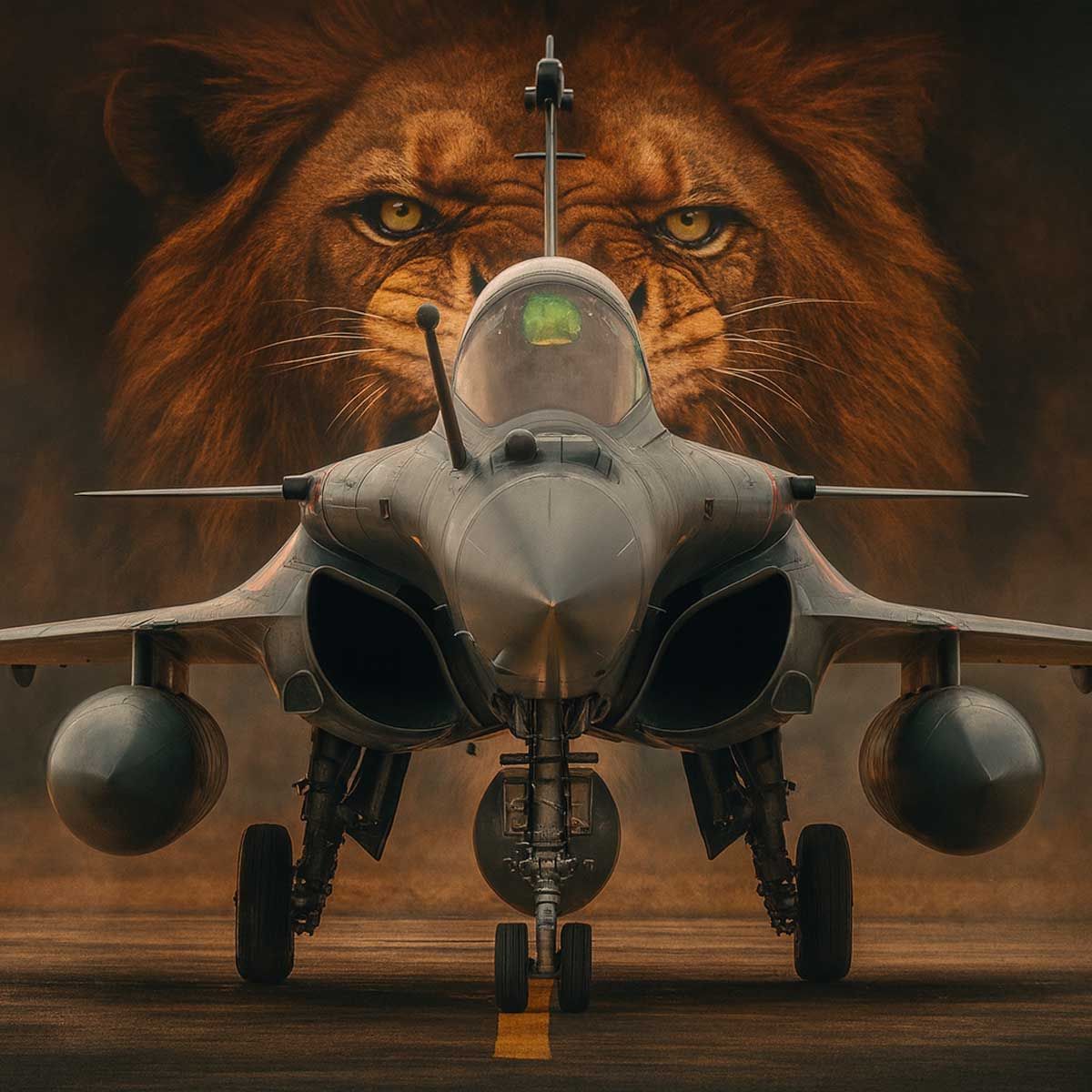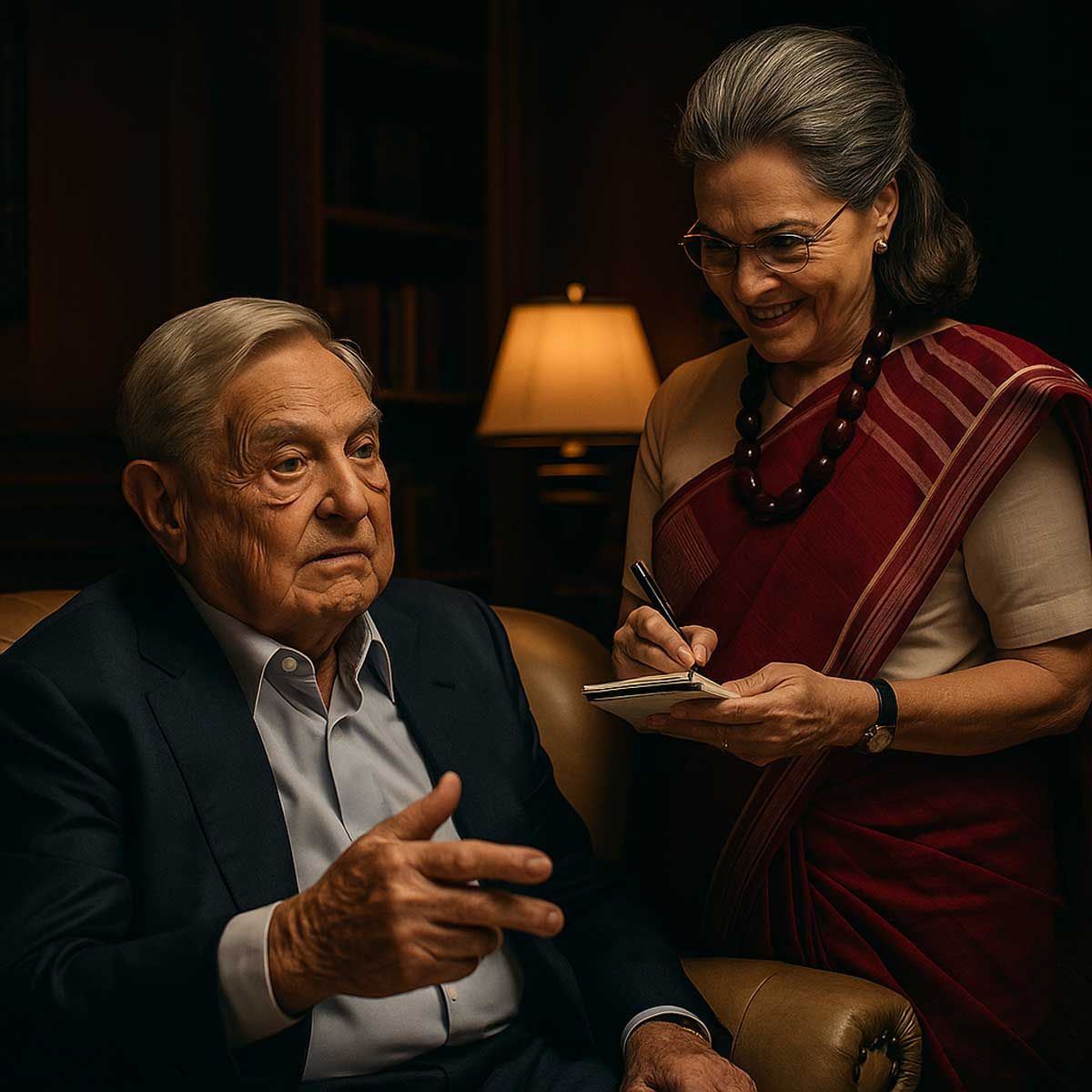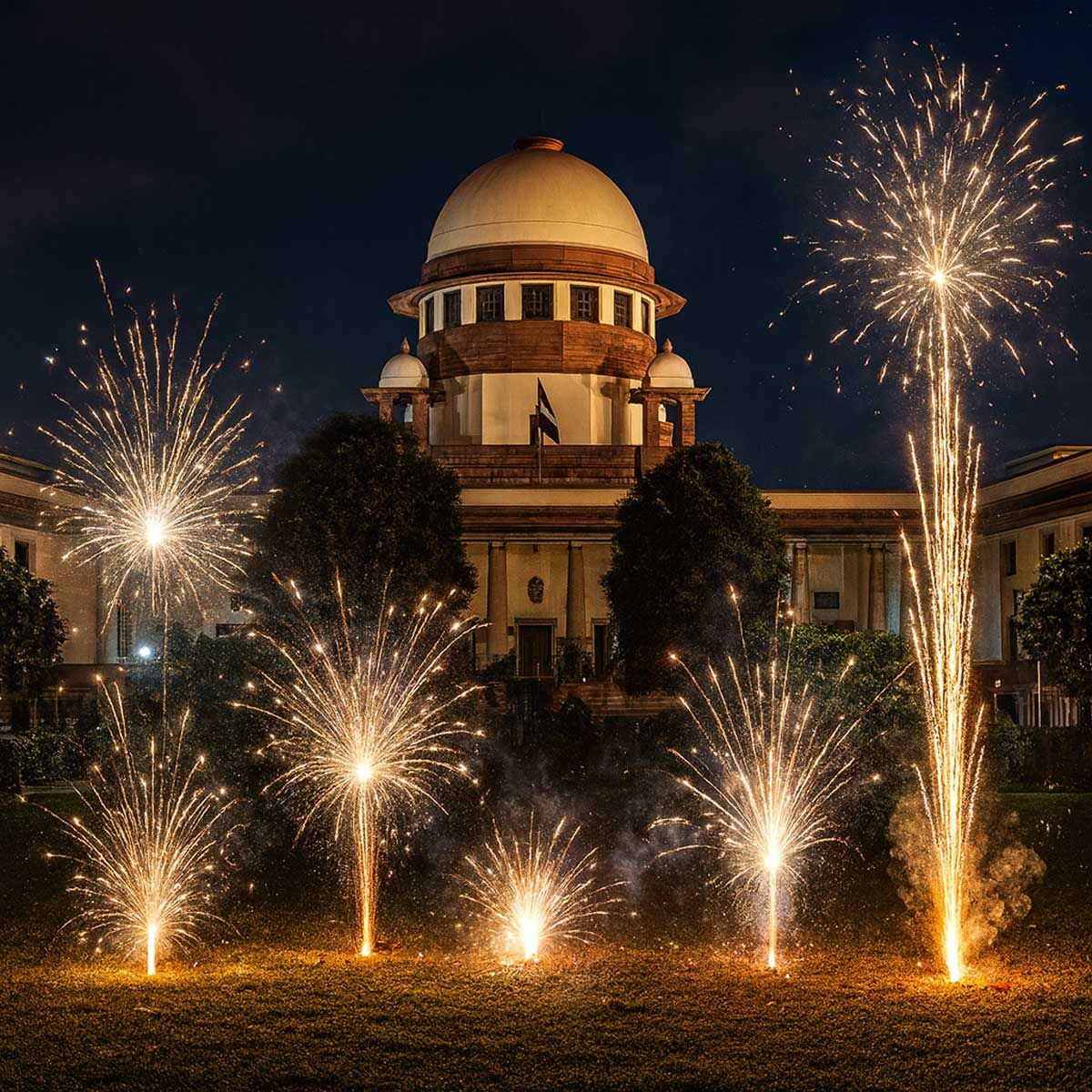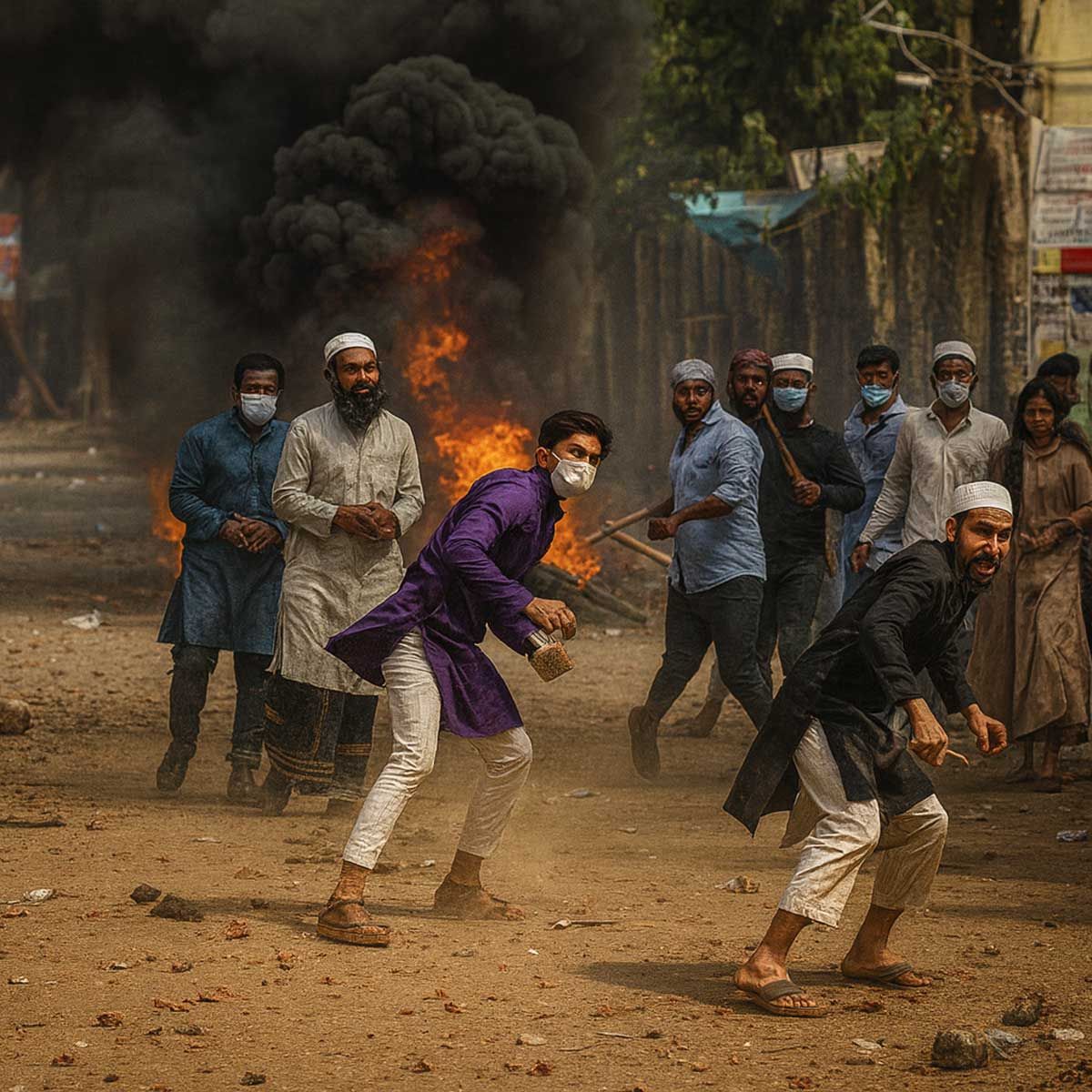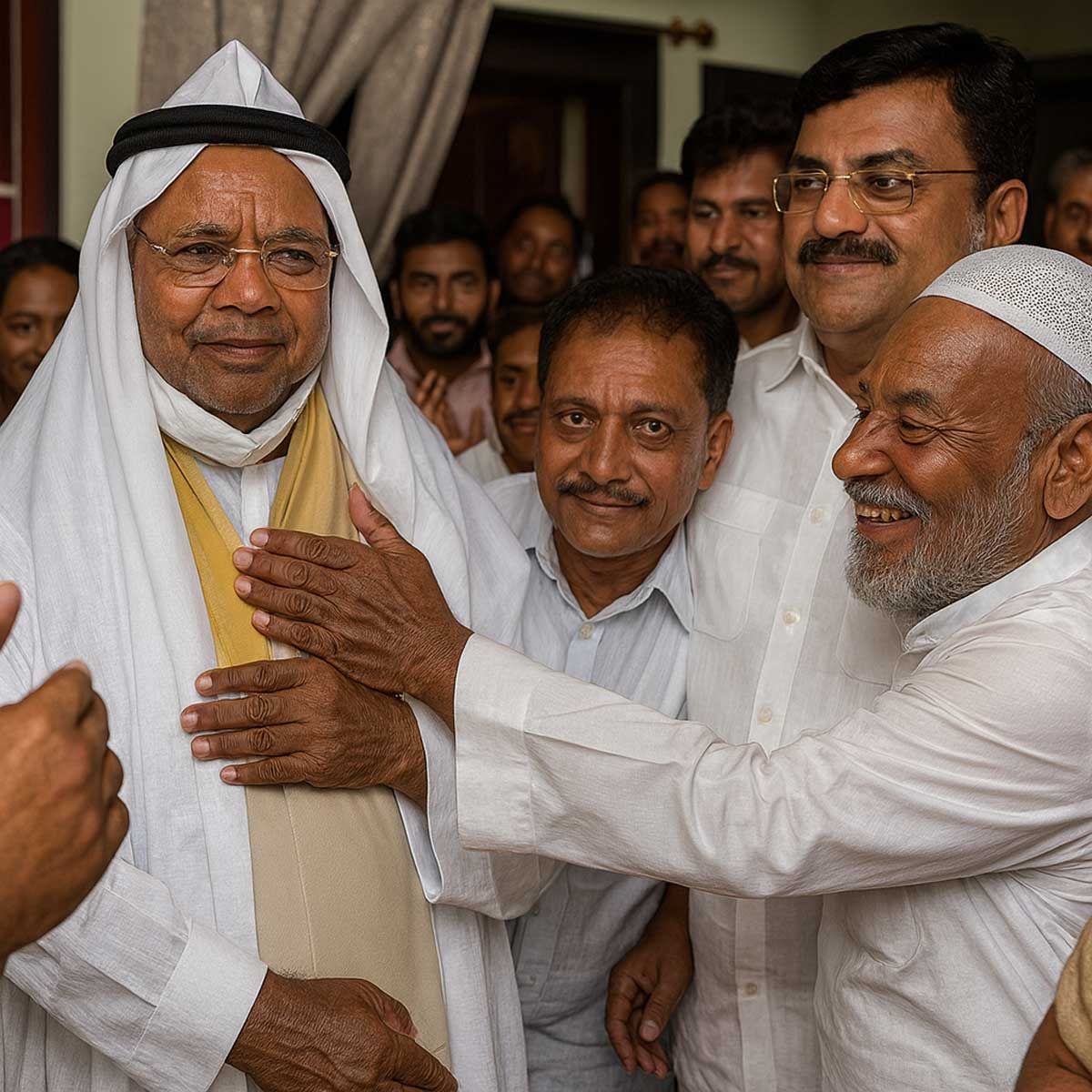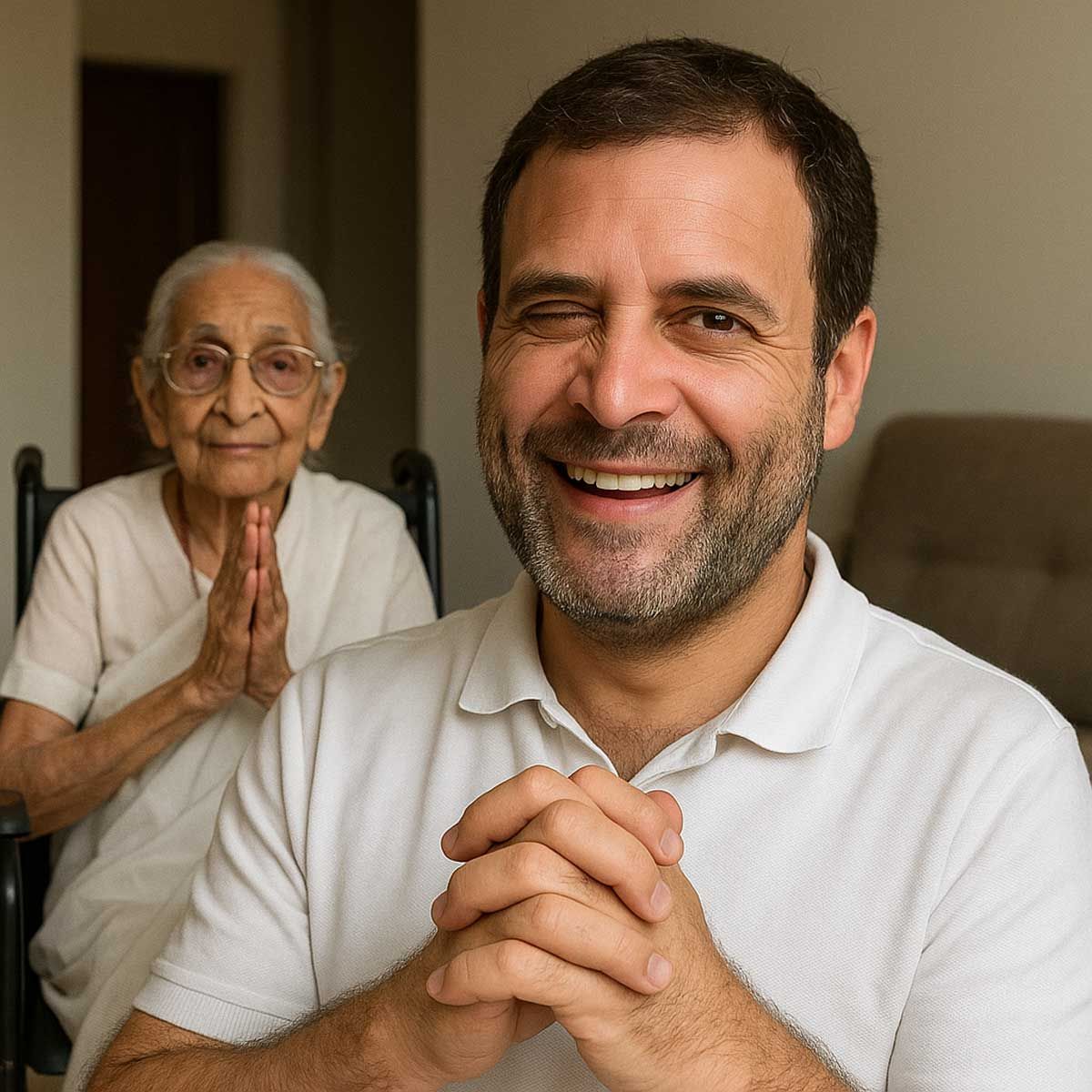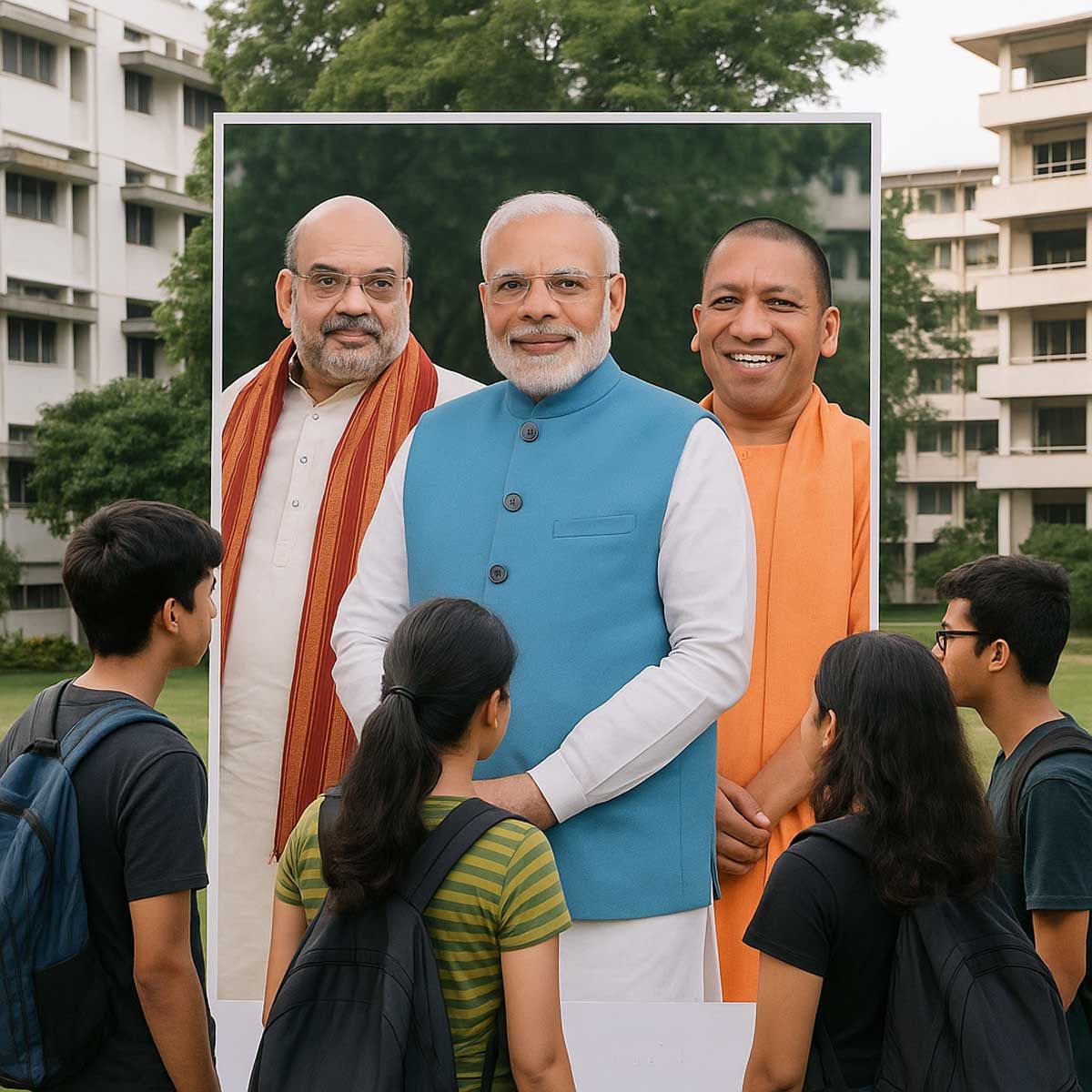More Coverage
Twitter Coverage
Satyaagrah
Written on
Satyaagrah
Written on
Satyaagrah
Written on
Satyaagrah
Written on
Satyaagrah
Written on
JOIN SATYAAGRAH SOCIAL MEDIA
"Ayaz Akbar dosen't like jail, they got the wrong kind of bars in there": Properties of Mohammad Akbar Khanday, popularly known as Ayaz Akbar who was and the spokesman of the Hurriyat Conference, attached by NIA in the Kashmir terror funding case of 2017
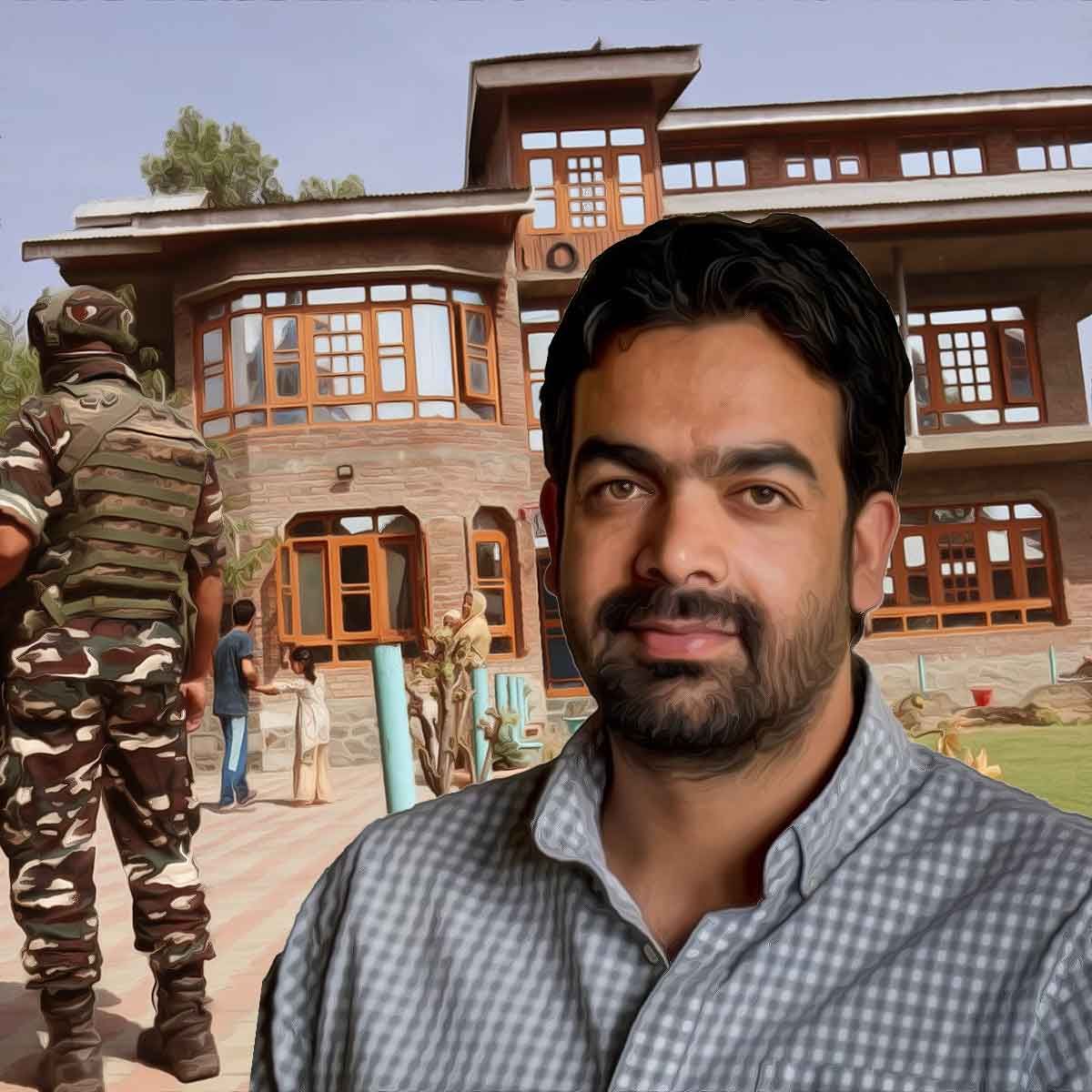
In a significant development in the Kashmir terror funding case of 2017, the properties of Mohammad Akbar Khanday, popularly known as Ayaz Akbar and the spokesman of the Hurriyat Conference, have been attached by the National Investigation Agency (NIA). This action comes shortly after the attachment of seventeen properties belonging to alleged terror financier Zahoor Watali.
|
Under the orders of a Special NIA Court in New Delhi, Khanday's two-storey residential house and 9 kanals of land located in Maloora, a village on the outskirts of Srinagar, have been attached under section 33(1) of the Unlawful Activities (Prevention) Act.
Khanday, who served as the press and public relations in-charge for separatist hardliner Syed Ali Shah Geelani and acted as a spokesperson for the Hurriyat Conference, was arrested on 24 July 2017. Alongside others detained in the terror funding case, he has been lodged in Delhi's Tihar Jail. The NIA initiated the case suo moto and accused Khanday of raising and collecting funds through illegal channels within India and abroad. These funds were allegedly used to sponsor and promote separatist and terrorist activities in Jammu and Kashmir.
According to a press release by the NIA, Khanday was closely associated with other separatist leaders of the All Parties Hurriyat Conference (APHC) and operated in close collaboration with the Hizb-ul-Mujahideen (HM). The investigation revealed his active involvement in activities aimed at the secession of Jammu and Kashmir from India. The case, filed by the NIA in May 2017, pertains to terrorist and secessionist activities carried out by ISI-backed proscribed terrorist organizations in Jammu and Kashmir.
The NIA's investigations have revealed that banned outfits such as Lashkar-e-Toiba (LeT), Jaish-e-Mohammad (JeM), and Jammu and Kashmir Liberation Front (JKLF) were using the APHC as a front for their activities. These groups were responsible for spreading terror and perpetrating violence in the Kashmir valley by conducting attacks on civilians and security forces.
The NIA has already filed charge sheets against 17 individuals in the case, including Hafiz Saeed, the Pakistan-based Amir of Jamaat-ud-Dawah and LeT, who is listed as a terrorist by the United Nations, and Mohammad Yusuf Shah, also known as Syed Salahuddin, the Chief of Hizb-ul-Mujahideen (HM).
The demise of Syed Ali Shah Geelani in September 2021 has left his organization and the amalgamation of pro-Pakistan groups virtually leaderless. None of Geelani's sons or daughters have chosen to carry forward his pro-Pakistan politics. Furthermore, Altaf Ahmad Shah, known as Fantoosh and Geelani's son-in-law in politics, passed away due to cancer in October 2022. As a result, Ayaz Akbar, who has been in jail since 2017, continues to face legal proceedings in the Kashmir terror funding case.
Mohammad Akbar Khanday
Mohammad Akbar Khanday, popularly known as Ayaz Akbar, is a prominent figure in the political landscape of Jammu and Kashmir. He gained prominence as the spokesman of the Hurriyat Conference, an amalgamation of various separatist groups in the region. Khanday played a crucial role in representing the Hurriyat Conference and articulating its stance on the Kashmir issue.
Born and raised in Jammu and Kashmir, Khanday has been associated with separatist politics for a significant period of time. He served as the press and public relations in-charge for Syed Ali Shah Geelani, a hardliner separatist leader who advocated for the region's secession from India. Khanday's role as a spokesperson allowed him to effectively communicate the Hurriyat Conference's viewpoint to the media and the public.
Throughout his tenure as the spokesman, Khanday expressed the Hurriyat Conference's position on various matters, including the ongoing conflict in Kashmir and the demand for self-determination. His statements often reflected the organization's strong pro-separatist and pro-Pakistan stance. Khanday vehemently criticized the Indian government's policies in the region and called for international intervention to address what he viewed as human rights violations and the denial of political rights to the people of Kashmir.
However, Khanday's involvement in the Hurriyat Conference also led to legal troubles. In 2017, he was arrested by the National Investigation Agency (NIA) in connection with the Kashmir terror funding case. The NIA alleged that Khanday was raising and collecting funds through illegal channels within India and abroad, which were being used to sponsor separatist and terrorist activities in Jammu and Kashmir. He was subsequently charged under the Unlawful Activities (Prevention) Act.
Since his arrest, Khanday has been held in Delhi's Tihar Jail along with other individuals accused in the same case. The legal proceedings against him have been ongoing, with the NIA presenting evidence and filing charge-sheets against him and other alleged accomplices. The case has garnered significant attention, highlighting the complex political dynamics and security challenges in Jammu and Kashmir.
As a spokesman for the Hurriyat Conference, Khanday's role extended beyond media interactions. He played a critical role in shaping the organization's narrative and representing its aspirations for self-determination. Despite facing legal challenges, Khanday remains a significant figure in the context of the Kashmir conflict and continues to be associated with the separatist movement in the region.
|
What is Hurriyat Conference and why is the Center planning to ban both its factions?
The Hurriyat Conference is a prominent political alliance in Jammu and Kashmir, and the Indian government is currently considering a ban on both of its factions under the Unlawful Activities (Prevention) Act (UAPA). This decision follows assertions by the National Investigation Agency (NIA) that funds obtained from aspiring students seeking admission to medical and engineering colleges in Pakistan were being redirected to support terrorist activities in Jammu and Kashmir. According to the NIA, this diversion of funds provides substantial grounds for banning the Hurriyat Conference under Section 3(1) of the UAPA.
In the midst of these circumstances, the Central Government is contemplating a ban on both factions of the Hurriyat Conference under the UAPA, which would enable government agencies to arrest any office bearer associated with the Hurriyat and disrupt the flow of funds. Meanwhile, supporters of Syed Ali Shah Geelani took down the signboard of Tehreek-e-Hurriyat (TeH) from his residence-cum-office in Srinagar. In contrast, the faction of the Hurriyat led by Mirwaiz Umar Farooq, who is currently detained, would continue to represent the aspirations of the people. This development coincided with the resumption of the political process in the valley following the revocation of Article 370.
The central government is considering the ban on the Hurriyat Conference due to the revelations made by the National Investigation Agency (NIA) in its charge sheets. According to the NIA, the funds collected from aspirants seeking admissions to medical and engineering colleges in Pakistan were allegedly diverted for terrorist activities in Jammu and Kashmir. These findings provide sufficient grounds for banning the Hurriyat under Section 3 (1) of the Unlawful Activities (Prevention) Act (UAPA).
The NIA's charge sheet highlights a triangular nexus involving terrorists, the Hurriyat, and the Pakistani establishment. It suggests that these three entities are allegedly collaborating to support Kashmiri students in their pursuit of medical and technical education, with the intention of cultivating a generation of professionals who may have inclinations favoring Pakistan. The charge sheet emphasizes the NIA's belief that this nexus is designed to further the interests of Pakistan in the region.
A spokesperson for the Hurriyat Conference has countered these allegations by stating that Mirwaiz, the leader of the Hurriyat, provided recommendation letters to students upon request to assist them in gaining admission to colleges and universities in Saudi Arabia, Malaysia, Turkey, and other countries. The spokesperson strongly denies the charges and describes them as baseless propaganda. They argue that the claims can be verified by speaking to the students and parents who have received such recommendations, many of whom come from economically disadvantaged backgrounds.
While the central government moves forward with its plan to ban the Hurriyat Conference, the organization continues to reject the allegations and maintain its stance against the accusations, asserting that they lack merit and evidence.
Hurriyat Conference: The Birth of APHC and Its Constitution
Inception of APHC: Mirwaiz Umar Farooq's Leadership
Following his father's assassination, Mirwaiz Umar Farooq assumed the role of chairman of the J&K Awami Action Committee (J&KAAC) and became the prominent head priest of Kashmir.
Formation of a Broad Alliance: Laying the Foundation
On 27 December 1992, Mirwaiz Umar Farooq organized a significant gathering at Mirwaiz Manzil, bringing together religious, social, and political organizations. The purpose was to establish a strong coalition of Kashmiri parties that would collectively oppose Indian rule in Jammu and Kashmir.
Birth of All Parties Hurriyat Conference (APHC)
On 31 July 1993, the culmination of their efforts materialized as the All Parties Hurriyat Conference (APHC) was officially founded. Mirwaiz Umar Farooq took on the role of its inaugural chairman, leading the newly formed alliance.
The Hurriyat Constitution: A Union of Ideologies
The Hurriyat Conference defines itself as a union comprising political, social, and religious parties from Jammu and Kashmir. Its constitution encompasses the following key principles:
- The APHC is committed to a peaceful struggle aimed at securing the right to self-determination for the people of Jammu and Kashmir. This encompasses the right to independence, in accordance with the UN Charter and resolutions adopted by the UN Security Council.
- The All Parties Hurriyat Conference (APHC) aims to seek an alternative negotiated settlement for the Kashmir dispute involving India, Pakistan, and the people of Jammu and Kashmir. This process would be conducted under the supervision of the United Nations or any other friendly country, taking into account the will of the people.
- The APHC strives to present the ongoing struggle to nations and governments worldwide, highlighting it as a movement against the alleged forcible and fraudulent occupation of the state by India.
The APHC Executive Council consists of seven members from different parties, including prominent figures such as Syed Ali Shah Geelani, Mirwaiz Umar Farooq, Sheikh Abdul Aziz, Moulvi Abbas Ansari, Prof Abdul Gani Bhat, Yasin Malik, and Abdul Gani Lone. Unfortunately, two members of the Executive Council, Sheikh Aziz and Abdul Gani Lone, lost their lives under tragic circumstances.
The APHC Working Committee is a crucial decision-making body within the organization. It comprises a total of 21 members, including the seven members of the Executive Council and two representatives from each of the parties associated with the Hurriyat.
The APHC General Council consists of 23 members, including representatives from traders' bodies, employee unions, and social organizations. Unlike the Executive Council, the General Council's membership can be extended.
The Hurriyat enjoys observer status at the Organisation of Islamic Cooperation (OIC), an international organization dedicated to safeguarding the interests of the Muslim world and promoting global peace and harmony.
The Hurriyat Conference emerged as a conglomerate of parties that contested the 1987 Assembly polls against the National Conference-Congress Alliance. These elections were marred by allegations of unfairness.
The conglomerate's general ideology revolves around the belief that Jammu and Kashmir is under India's occupation, and the wishes and aspirations of the people should be considered for a final resolution to the dispute. It brings together two distinct ideologies: those seeking independence from both India and Pakistan, and those advocating for Jammu and Kashmir's merger with Pakistan.
It is worth noting that many of the groups associated with the Hurriyat have direct or indirect links to militant outfits. The Hurriyat represents the political face of the militant movement and claims to represent the true wishes and aspirations of the people.
Hurriyat Conference Divides into Factions Twice (2003 and 2014)
In 2003, the Hurriyat Conference, characterized by its diverse coalition of parties, faced internal disagreements that led to a split. The divisions centered around differing opinions on future strategies, the role of militancy, and the importance of dialogue. Syed Ali Shah Geelani, leading one faction, insisted that talks with the Indian government could only proceed if they acknowledged the dispute over Jammu and Kashmir. Meanwhile, Mirwaiz Umar Farooq, heading the other faction, advocated for engaging in dialogue.
The split became official on September 7, 2003, when the Geelani faction was ousted by then Hurriyat Chairman Abbas Ansari and Masarat Alam was appointed as the interim chief. The executive council, consisting of seven members, was suspended, and a five-member committee was established to review Hurriyat's constitution.
After being removed from the Hurriyat, Geelani severed ties with Jamaat-e-Islami and formed his own party called Tehreek-e-Hurriyat Jammu and Kashmir in August 2004.
In 2004, the Mirwaiz faction of the Hurriyat engaged in a dialogue with the Vajpayee Government, leading to a facilitated visit to Pakistan. In June 2005, several leaders from the Mirwaiz faction, including Yasin Malik who had parted ways with the Hurriyat, traveled to Pakistan via the Srinagar-Muzaffarabad road. Their purpose was to hold discussions with Kashmiri separatist leaders based in Muzaffarabad and representatives of the Pakistani establishment.
Another significant split occurred within the Mirwaiz faction in 2014 when four leaders departed from the group. Shabir Ahmad Shah, president of the Democratic Freedom Party, Nayeem Ahmad Khan, chairman of the National Front, Mohammad Azam Inqlabi, chief of Mahaz-e-Azadi, and Mohammad Yousuf Naqash, leader of the Islamic Political Party, all left the faction.
Currently, both factions of the Hurriyat Conference remain inactive, with the hard-line faction leader Ashraf Sehrai having passed away in custody and the moderate leader Mirwaiz Umar Farooq being incarcerated.
 Support Us
Support Us
Satyagraha was born from the heart of our land, with an undying aim to unveil the true essence of Bharat. It seeks to illuminate the hidden tales of our valiant freedom fighters and the rich chronicles that haven't yet sung their complete melody in the mainstream.
While platforms like NDTV and 'The Wire' effortlessly garner funds under the banner of safeguarding democracy, we at Satyagraha walk a different path. Our strength and resonance come from you. In this journey to weave a stronger Bharat, every little contribution amplifies our voice. Let's come together, contribute as you can, and champion the true spirit of our nation.
 |  |  |
| ICICI Bank of Satyaagrah | Razorpay Bank of Satyaagrah | PayPal Bank of Satyaagrah - For International Payments |
If all above doesn't work, then try the LINK below:
Please share the article on other platforms
DISCLAIMER: The author is solely responsible for the views expressed in this article. The author carries the responsibility for citing and/or licensing of images utilized within the text. The website also frequently uses non-commercial images for representational purposes only in line with the article. We are not responsible for the authenticity of such images. If some images have a copyright issue, we request the person/entity to contact us at This email address is being protected from spambots. You need JavaScript enabled to view it. and we will take the necessary actions to resolve the issue.
Related Articles
- Supreme Court dismisses plea seeking protection of Hindus from the Muslim community in Mewat
- Terrorists in Jammu and Kashmir killed Bank Manager Vijay Kumar of Ellaquai Dehati Bank, CCTV footage emerged of the incident: targeted killings of Hindus and other minorities ongoing for over a year
- Srinagar Police arrested local hybrid terrorists affiliated with the terror outfit The Resistance Front (TRF), an offshoot of Lashkar-e-Taiba: Recovered arms, ammunition, and incriminating material
- Ministry of External Affairs summons South Korea Ambassador over the pro-terror stance of Hyundai Pakistan on Kashmir and expressed strong displeasure of the Government: Korean Minister Yong exhibit regret
- The ‘Sanghi propaganda’ trope on abduction and conversion of Sikh girls to Islam. Here is how this online tirade is an omen of impending danger
- Two Lashkar-e-Taiba terrorists sent to '72 hoors' in an encounter in Jammu & Kashmir: Jan Mohd Lone who killed bank manager Vijay Kumar eliminated by security forces, killer of school teacher Rajni Bala trapped by security forces
- Kashmir humiliates Pakistan and gives cold shoulder to Pakistan sponsored ‘Kashmir Solidarity Day’ as no public speeches, rallies on the eve from the public or separatist movements or any special prayers in mosques
- Violent protests erupts in Srinagar after Yasin Malik was awarded life imprisonment by the court on terror funding charges, Islamists came to the streets and pelted stones at the security forces
- Mudassir Ahmad Sheikh, martyr of J&K police killed three Pakistani terrorists of Jaish-e-Mohammad (JeM) before laying his life for Nation in Baramulla encounter: Father of braveheart proud of his son who sacrificed his life for Tirangaa
- Srinagar: Top LeT commander, 1 Pakistani terrorist killed in encounter, AK-47s recovered
- Kashmiri separatist Yasin Malik awarded two life imprisonment sentences, 10 years of rigorous imprisonment for 10 offences and Rs 10 lakhs financial penalty by Special NIA court for terror funding activities in Jammu and Kashmir
- ‘State in denial, admin lied about no complaints being filed, prima facie evidence of violence’: Everything Calcutta HC said on Bengal post-poll violence
- Bengal: Calcutta HC Asks NHRC To Examine Pleas Of People Displaced By Post-Poll Violence; Warns State Government Against Obstruction
- United Nations says it has no money to feed poor in war-torn Yemen but ready to pay USD 6 million to Taliban for security and food
- “All Eyes on Reasi”: In a harrowing coincidence with India's PM taking oath, terrorists attacked a bus in Reasi, Jammu and Kashmir, killing 10 and injuring 33 pilgrims returning from Shiv Khori mandir, plunging the nation into mourning for the devotees















